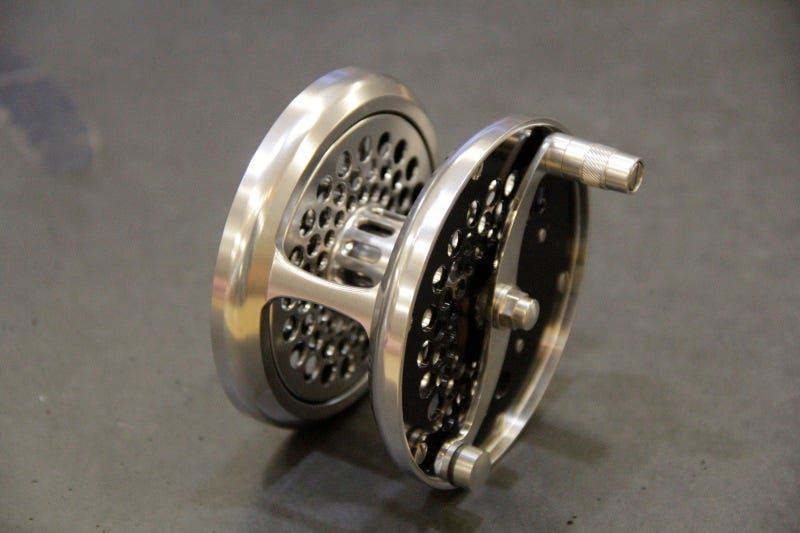Fly Fishing 101: Guide to Buying Fly Fishing Reels
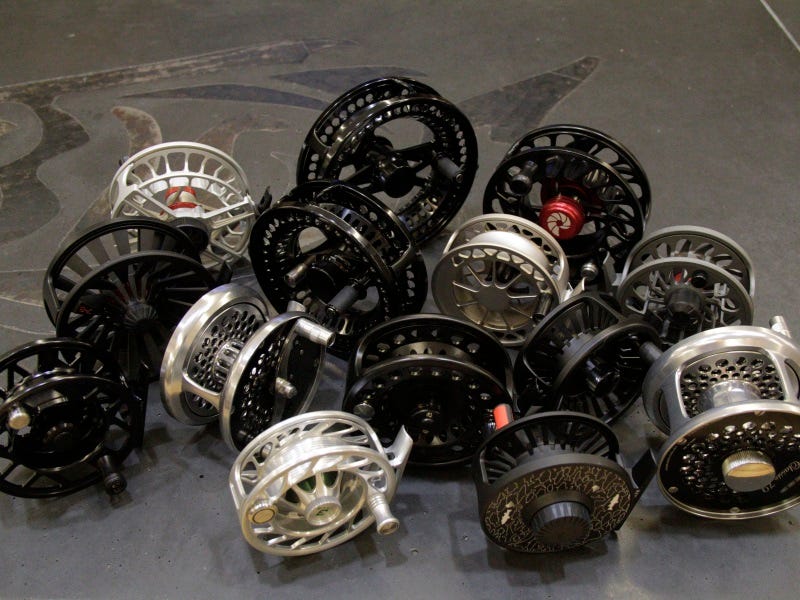
Most Asked Fly Reel Questions
In the fly shop, anglers always have questions about fly reels. What’s a good fly reel? What size do I need? If I have a 5-weight rod, do I need a #5 reel? Why are some reels so expensive?
Valid questions. Rest assured, we have the answers you need. That’s why you come to the North 40 fly shop in the first place. If however, you are sitting at home and doing research online, be sure, you’ve also come to the right place.
The Attraction of Fly Reels
Fly reels are, arguably, the coolest part of an outfit and the most simple. The coolest, because of how they look, feel and sound. The most simple because, in many situations, the reel simply holds the line and the angler takes care of everything else manually. Compared to spinning reels and level-wind casting reels, fly reels are pretty simple.
I look at a fly reel like a watch; all watches tell time, but some of them look and sound better while doing it, and some last a long, long time. Fly reels are much the same. They all feed and retrieve line. Some of them look and sound better while doing it. Some wear out quick. Others last forever.
What Size Fly Reel Do I Need?
As a rule, manufacturers provide guidelines for reel size for recommended line weights. It’s pretty easy to go with that. Some manufacturers will straight-up list the line size recommendations right on the reel, like 5/6 for 5 or 6-weight fly lines and rods. Other manufactures might have a different system. An example is a #2 reel might be recommended for a 5/6-weight line while the #4 might be rated for a 9/10-weight. You can always check the manufacturer’s website or ask your fly-shop professional for guidance.
Beyond what the manufacturers recommend, there are several considerations. Most importantly, the reel must carry the fly line and sufficient backing for your needs. Most standard trout reels carry approximately 100 yards of 20# backing behind the fly line. That’s more than most anglers ever need, but we are always hoping for that special fish that just might demand all of it.
If you venture into the salt for species such as bonefish, tarpon, and GT’s, you’ll need significantly more backing. As fly reels get bigger to accommodate larger line weights and heavier rods, they accommodate more backing.
Balance is another key. Some anglers like their reels to perfectly balance the weight of the rod when they grip it. Others like the reel to be as light as they can find. Balance is a personal choice.
A third consideration is spool diameter. A larger spool diameter picks up line faster. Some of today’s reels are so light, you can easily match a large diameter reel on a relatively light rod and still maintain good balance.
What Are Fly Reels Made Of?
These days, fly reels are generally made from molded plastic, cast aluminum and machined aluminum along with plastic, brass, carbon fiber and stainless-steel parts.
Plastic or resin reels are the least expensive and the least durable. If you are just getting into the sport and don’t want to invest a bunch of money though, they are perfectly usable for simple fly-fishing demands.
Die-cast reels are either painted or machined to spec and then painted. Cast reels are slightly heavier than fully machined reels, slightly less rigid and not as strong. They are, however, sufficient for many freshwater fly-fishing applications and with a sealed drag, can be used in saltwater.
Solid bar stock reels are machined to spec and then anodized. This is an expensive and time consuming process. Anodization provides better corrosion resistance and bar-stock aluminum is harder and stronger than cast metals. These higher end reels also can be very artistic and some companies have custom colors and even graphics choices.
If strength, corrosion resistance, longevity and possibly customization are in your budget, the solid bar-stock reel is the premium choice.
What Other Characteristics Differentiate Fly Reels from Other Fishing Reels?
Arbor: One of the most notable characteristics of fly reels is the arbor size. The arbor is basically the diameter of the spool where the backing is attached to the reel. Today’s reels generally feature what are termed middle or large arbors. Standard arbor reels are considered by some to be relics because they require lots of revolutions to fill with backing and retrieve line. Mid-arbor reels are popular when backing needs are greater. Large arbors provide the best retrieve ratios.
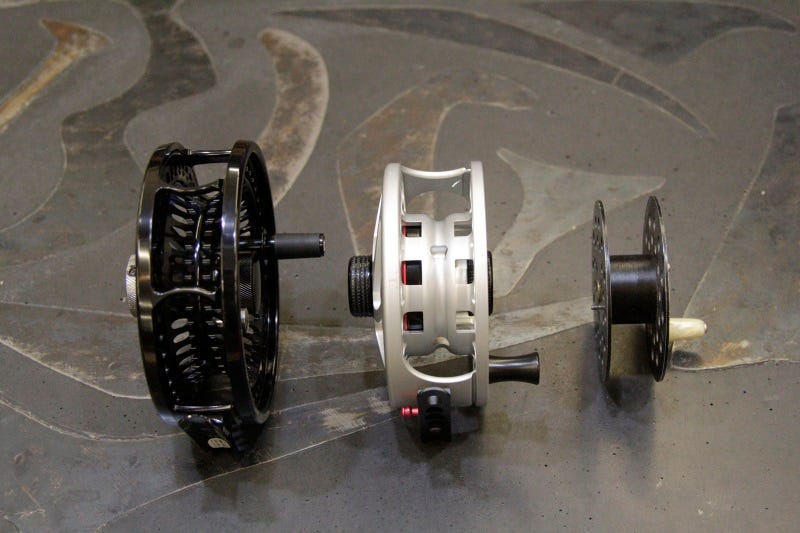
Fly reels are offered in a variety of spool widths and shapes. A wide spool allows for more backing, but adds weight if the diameter is large. A narrow spool reduces weight and allows for a larger diameter or arbor, but can limit backing volume. Some spools have a concave or V-shape, to help the backing level out when it is retrieved.
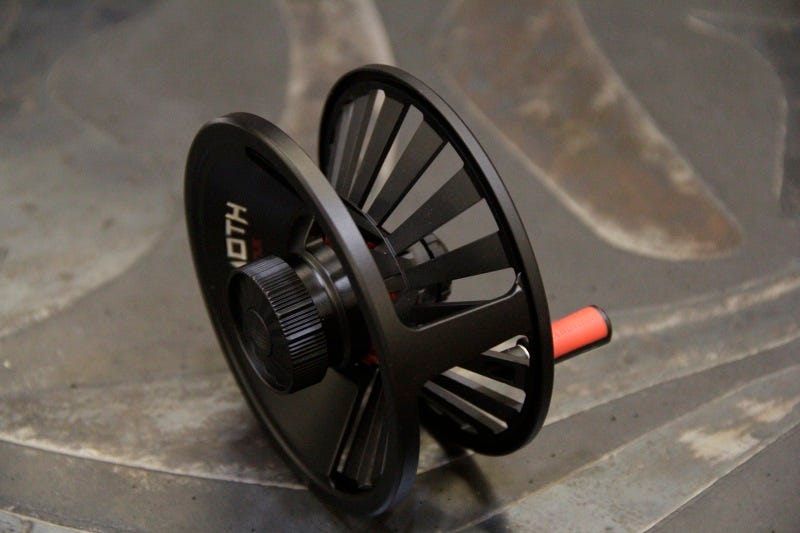
Reel frame and spool designs: Some reels feature an open frame and others have a full frame or cage that surrounds the spool. An open frame reduces weight. A closed frame is more secure and keeps fly line or backing from having any chance of being pinched between the frame and spool.
The majority of modern fly reels have an exposed spool rim. That provides anglers with a surface to palm or add friction. Regardless of the drag system, most anglers prefer access to the spool rim.
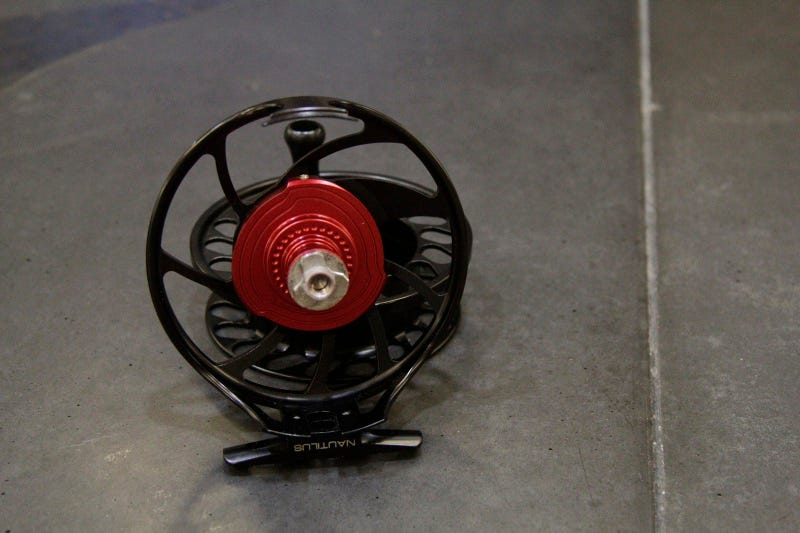
Click and Pawl
The click and pawl is basically a friction system that provides enough tension on the spool to keep it from overrunning. Click and pawl reels also have an unmistakable click sound that many anglers love. Some feature a slight drag increase while others offer no adjustment.
A fully sealed disc drag is becoming the norm on most fly reels. A sealed disc drag keeps water, sand, mud and whatever else from disrupting the drag’s functionality and requires no maintenance.
Many sealed drags are infinitely adjustable and others feature noticeable detent settings. Disc drags are preferred by many anglers and very important for big gamefish applications.
Do I Need a Special Reel For a Spey Rod?
Not necessarily. The key to any reel is size and balance on the rod and the ability to carry the line and enough backing. Since spey rods are longer than single-hand rods, they balance with larger diameter reels. An 11’6” trout spey rod in the 4-weight range likely fits a reel designed for a single hand 7/8 rod. A 13’ 8-weight steelhead rod balances with a 10/12 sized reel.
Beyond balance, many spey anglers prefer a reel with a full cage. This ensures that the running line never gets pinched or pulled though the spool. Some also prefer a reel with an audible outgoing click, or “fish alarm.”
Do I Need a Special Reel For Saltwater?
Yes. Saltwater applications are where corrosion resistance and sealed parts are critical. Saltwater species also tend to be large and strong, demanding a solid reel with a smooth, powerful drag. Large arbors are also desired to maximize line retrieval speeds.
How Much Should I Spend On A Good Reel?
Get the best reel you can afford and be happy with it. You can find trout reels that get the job done for under $100. A good trout reel costs between $100 and $150. A great reel will be $200 plus. For saltwater or large salmon/steelhead spey, a good reel starts around $200 and a great reel starts near $500 and can go significantly higher.
How Should You Buy Your Fly Reel?
Just like with fly rods, I think you should touch your reel before you buy it. Better yet, put it on your fly rod or on a matching rod in the fly shop to determine if it is has the look and feel you are after. You’ll be able to tell pretty quickly if you love it. A good reel will speak to you. If you order online you can always return the reel if it doesn’t fit your needs.
So What’s A Good Fly Reel?
For such a simple piece of equipment, there are many designs and styles to choose from. I hope I have answered your questions or at least peaked your interest to delve more into reel possibilities. Obviously a good fly reel is going to be a personal choice. To me, a good fly reel does not wobble, corrode, seize up or fall apart. I don’t like to be distracted by faulty gear when I’m fly fishing.

